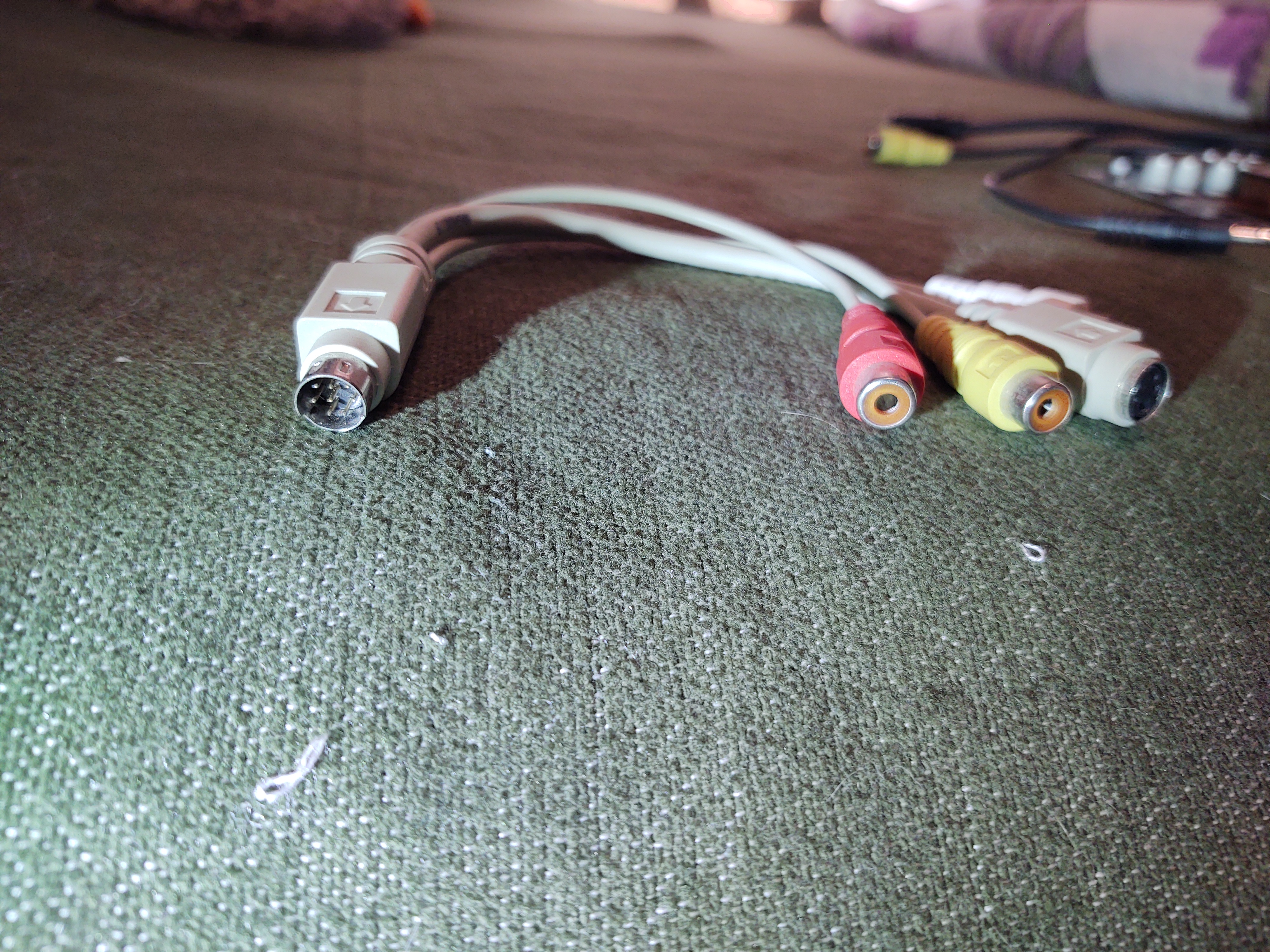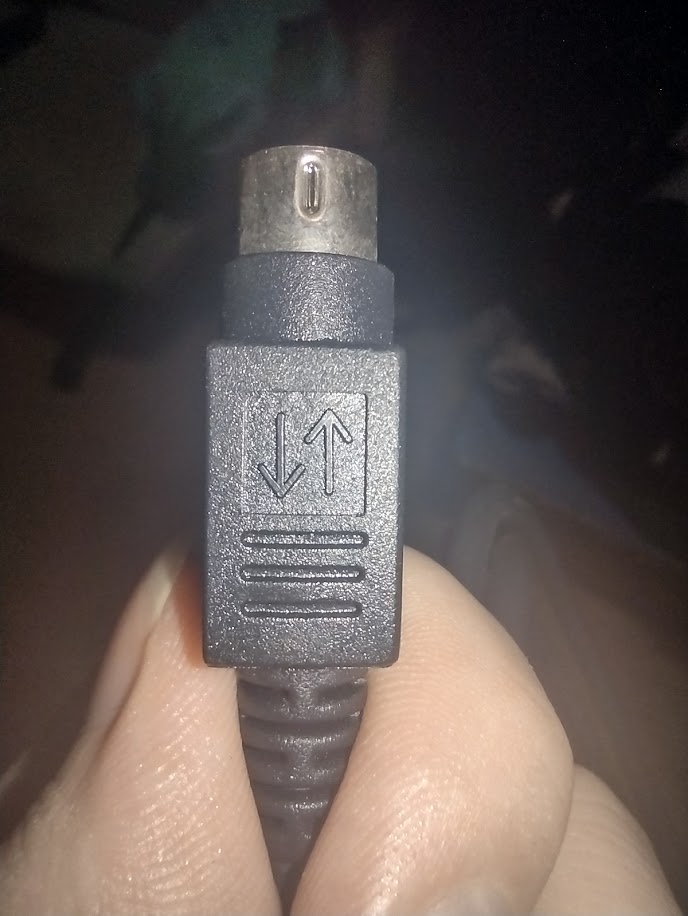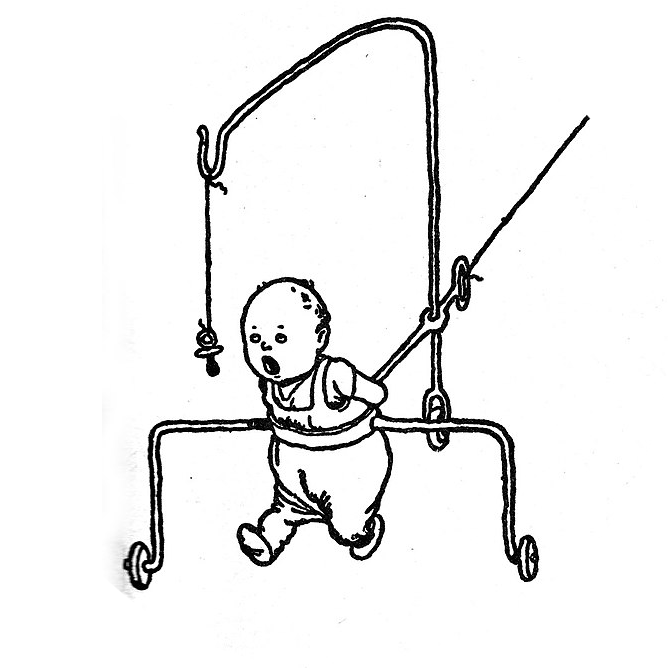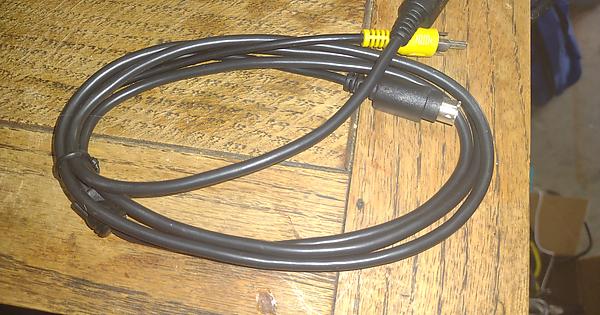I’m going through old cables and get the impression that this is for a specific product, but I can’t tell what product it’s for.
Well, it is for sure an S-Video cable. There was a 7 pin variant too, but it doesn’t look like the one pictured. The other end has a 4 pin S video and composite video cables.
As you say, it is for some kind of specific product, perhaps a video capture card?
This looks pretty close? https://www.av-connection.com/?PGr=2575
Edit: looks like it might be a 9 pin s video to 4 pin s video + composite adapter.
Could also be to hook a digital camera up to your TV. I had an older camera that had something similar.
I agree with this, it’ll be for a digital camera or an old camcorder
This
Kinda sorta, a similar idea at least, but not the same pin configuration on the input end.
It’s likely to be academic. This is most likely a semi-proprietary breakout cable for some piece of consumer gear, either a camcorder, laptop, early capture card, or similar. There were oodles of these damn things in the late 90’s and early 2000’s, and various manufacturers did their own things with the pin layout on the device side of the cable. There was no standard. I had several ATI capture cards that had similar ports on them, for instance, which went to ATI specific breakout boxes for composite and S-Video but would not accept a normal S-Video cable in and of themselves. Other video cards had “TV Out” ports that would connect to vendor specific breakout cables that went to composite, S-Video, and sometimes even component. And some of these while mechanically similar or even identical also were not electrically identical, just to be annoying. So you can’t trust one cable to work with another device even if the plug is the same shape with the same number of pins…
Anyone interested could easily ring this out with a multimeter and figure out what the pinout is, but that may not necessarily help in determining what gadget it was originally meant to work with. If OP doesn’t have whatever piece of hardware this came with, it’s unlikely to be useful for anything. (And the DIN plug is not the same layout as the Sega Genesis 2 video port, either, which was my second thought.) Some pins on this may even be unused and just there for keying, or so the manufacturer could use a commodity plug, because S-Video + Composite should only need at most 6 pins even if every signal has its own separate ground.
Testing with the multimeter, the outer pins of the 7-pin connector are 1-to-1 with the pins in the same places of the 4-pin connector. I read the wikipedia article on mini din connectors more carefully, and there is an indication that this scheme was sometimes used to have a socket which could accept either an S-video cable or the proprietary one. However, the keys don’t look compatible. The key on the 7-pin is both wider and thinner than on the 4-pin.
the center pin of the row of 3 connects to the pin of the rca connector, and the ring of all 3 connectors are connected together. The center two pins of the row of 4 are not connected.
Alright, I am making a parallel reply to my other reply, because I went down into the dungeon and busted out my Antiquated Electronics Adapters Box Of Doom to look for some breakout cables. I knew I have a dickton of this type of thing, and I do. We might be getting closer.
Check it out:

This is an old GeForce 7950 with an analog TV out, was was the style at the time, and what I believe to be its attendant breakout cable. This card IIRC only supports S-Video and composite out. The connector on that is very similar to yours, with only one pin relocated. And the difference is, this cable also supports stereo audio output, which is what I believe the unused pins in your connector were probably for, although your cable does not have an audio jack on it. The port it plugged into may have supported it, or a version of a similar gadget using the same port did.
For comparison, this is an A/V input cable for an ATI capture card:

Same connector, opposite purpose! Note that the ATI cable also uses the audio pins, but this time for input. Now you see why identifying these things is such a PITA. Manufacturers just did whatever the hell, either repurposing or reconfiguring outwardly similar or even identical plugs.
To clue in the user, these cables actually have direction-of-signal arrows molded into the top. Does yours? I can’t tell from the picture.

Both din connectors have a two-way symbol

Well that’s mighty interesting. That implies two way signal, so this can either play back or record.
I think that narrows it down to some manner of analog video capture card or device – one that’s not expecting audio, at least from this cable. Something like one of the Hauppauge WinTV cards, several of which had a separate 1/8" audio input jack, leap to mind. Those were input only, though.
That pinout matches this port:
https://www.techpowerup.com/articles/other/97
So this is probably intended as a video out cable, rather than video in. The extra pins may go into unused holes in the port, or pass into the rectangular hollow in it where the keying peg would usually go. If not for an ATI card or port like this, it’s certainly for something similar. Notably, neither your cable nor this port carry a component video signal which was typical for later nVidia cards and their ilk.
Likely Solved
Of the options people have presented, a video card is by far the most likely for us to have owned at the era those options are from. The two-way arrow symbol on the connectors does give a little bit of doubt, but it seems pretty clear at this point that if I still owned the matching product, I wouldn’t use it, and that’s enough info for my needs
I don’t believe we ever owned a capture card, but it’s at least plausible to me that an old video card may have used it.
Sounds about right. The cables in OP remind me of the adapters I used to use with consoles and my parents old ass TV back in the day (like 00s era lol)
Yea, looks like a cable for a video game console
It is definitely 7 pins, not 9. The pin layout matches this image on the wikipedia page for mini din: https://commons.wikimedia.org/wiki/File:S-Video_7-pin_quasi-DIN_connector.JPG#/media/File:S-Video_7-pin_quasi-DIN_connector.JPG
I tested the pin connections and it does match the “compatible with an S-video… plug” in the image’s caption, but I don’t know if the keying allows for that. The key on the 7-pin is both wider and thinner than on the 4-pin.
The fact that this is a long cable instead of a short adapter does give me the impression that both the 4-pin mini din and the rca connector are supposed to be used simultaneously.
deleted by creator
Its a Combined s-video and composite video adapter cable. I had a similar one for an old digital camera, but I think it used 3.5mm audio jack to plug into the camera?
Just a hypothesis… could it be part of an ancient KVM system?
S-Video for video, and the other two are for your preferred keyboard and/or mouse interface.
Maybe a Sega Genesis/Mega Drive cable? I think I spy a Nintendo RF converter in the background, so that’s my guess.
That is indeed a Nintendo RF converter in the background, but I don’t believe we ever owned a Sega console. Granted, I didn’t know we had a SNES until it was found a few years ago in a shed that was being torn down
Probably for a digital camera. I have a few of these in various forms, all for digital cameras/camcorders I’ve had. They’re used to display the camera’s output on a TV or monitor.







